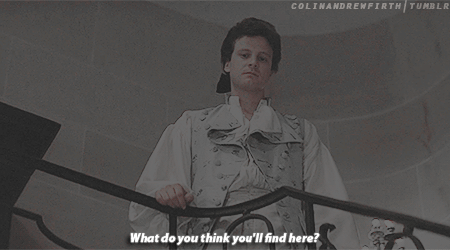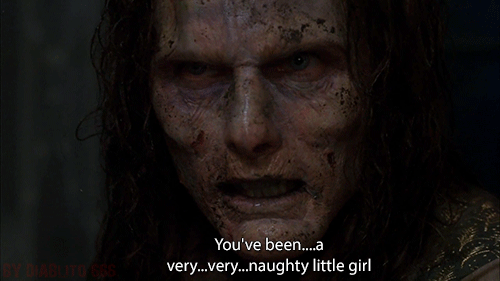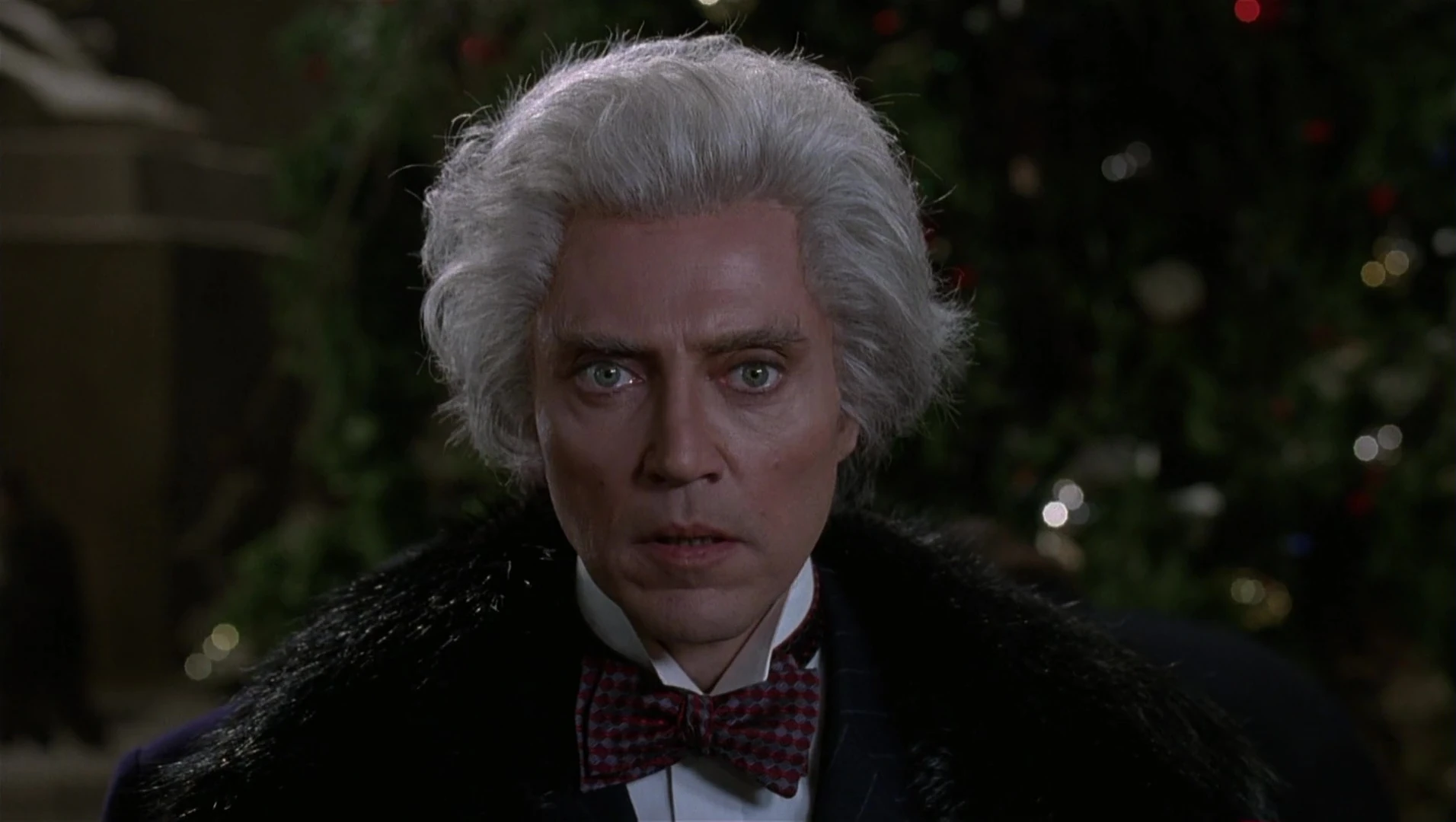Character Analysis: Lestat de Lioncourt
By: Brian Cotnoir
So a little background
story first: This year, I went to the city of New Orleans for my 28th
birthday this year. It was my first time
in the city, I have no clue what made me want to go, but it just seemed like my
kind of place, so me and my best friend booked a flight down and spent the week
down there, and fell in love with the French Quarter. Since I got back, I’ve been obsessed with
all things New Orleans. I’ve been
reading books about the city, watching movies and TV shows set there, that city
put some kind of spell on me. And well,
I figured this would be the time to talk about an Anne Rice character seeing as
a good portion of her Vampire Chronicles stories are set in the New
Orleans area. And I could think of any
better Anne Rice character to write about than Lestat de Lioncourt. Now I should clarify that I am only going to
be talking about the Film versions
of Lestat only, so I’m sure to leave out some key details about his life in
this post because I’m only focusing on the film versions of him, and there’s
bound to be differences or changes to the events in the life of Lestat in the
films vs. the events of his life in the books, and there are a lot of things in
both film versions that seem to contradict one another.
CHARACTER: Lestat de
Lioncourt from “Interview with a Vampire”
(1994) and “Queen of the Damned” (2002).
 |
| Lestat. Tom Cruise (L) and Stuart Townsend (R) |
In the earliest
introduction to Lestat de Lioncourt we see that was a French Nobleman sometime
in the late 18th century. He
was transformed into a vampire by a vampire named Marius in the winter of 1788,
on an island in the Mediterranean.
Marius teaches Lestat everything he needs to know about being a vampire,
though he absolutely detests having to hide his vampirism, when he feels he
should be able to tell everyone. He
records his thoughts in a diary while living with Marius, and eventually
discovers the crypt of Queen Akasha—the Vampire Mother of All vampires—and unintentionally
awakens her.
Lestat has certain arrogance about him. He is cocky, self-centered, egotistical, and is
constantly in pursuit of a new kill or person to turn into a personal play
thing. He is manipulative and likes to
play mind games with people. To him
people are things for him to play with. To
Lestat, mortals are either food, or someone he can turn into to use has his own
personal plaything. He has total
disregard for all persons other than himself.
He also comes across as a person who has to be completely in control, it’s his
way or the highway.
| Lestat and his protege Louis from |
Three
years later he wound up in 1791, where he met a young man named Louis de Pointe
du Lac, of which he becomes infatuated with and turns into a vampire. Although, Louis requested that Lestat turn
him into a vampire, Louis has an extremely difficult time coming to grips with
his new life as a vampire and his reluctance to take any human lives so that he
might live another day, and instead opting to feast on the blood of animals
instead. Louis’s desire to remain human by avoiding taking the lives of
humans tests Lestat’s patience and prompts him to lash out at Louis in anger,
and he is constantly peppering him with verbal abuse and antagonizes him for
not accepting his life as a vampire.
Lestat often has to finish Louis' kills for him. Fearing Louis will leave him, he turns a young
Orphan girl, named Claudia, into a vampire so the two of them might raise her
as their daughter. Lestat is very
impatient with Louis, but as time progresses he does become more patient.
Lestat
is also quite musically gifted. In “Queen of the Damned” it is revealed that
Lestat is quite an accomplished musician.
He plays the violin and is also a great singer with hypnotic-like
vocals, and at this point in his life he’s more interested in feeding on humans
rather than turning them into vampires, and at no point does he try to turn any
of his bandmates into vampires either.
THE ACTORS:
Lestat is played by Hollywood Legend Tom Cruise in “Interview with a Vampire” and actor
Stuart Townsend in “Queen of the Damned”. Each actor portrays Lestat in entirely
different ways. Cruise’s Lestat is a
colorful, charming, attention seeker, who craves the admiration and affection
of others. Townsend’s Lestat is definitely
a more brooding, apathetic type. He’s
arrogant, but also gives off a loner vibe.
Like Cruises Lestat he has a desire to be heard by all, but strangely
enough does not want to be seen. Very
rarely in “Queen of the Damned” do
you see Lestat appear with his bandmates unless he’s performing on stage,
otherwise he seeks isolation and hides in his castle in England.
CHARACTER
IS SIMILAR TO OR INSPIRED BY:
Lestat in The
Vampire Chronicles novels was inspired by Author Anne Rice’s husband Stan
Rice. In fact Lestat in the novel was
almost named Lestan.
As for the film
portrayals of Lestat, well like the actors who play Lestat they both present
their representations of Lestat in very different ways. Tom Cruise definitely comes
across as more foppish and sophisticated.
He is a person who wants and desires only the finer things in life, and
will stop at nothing to get what he wants.
He is focused on outward appearances and looking his best. There are definitely a lot of homoerotic
undertones in Cruises portrayal—just like in the novelization of Interview with
a Vampire—but in the film comes more across as a bisexual or polyamorous
man seducing both men and women indiscriminately. He appears to prefer young women, just to
feed upon, but seems more sexually attracted to men.
I
would say Cruise’s Lestat is quite similar to Colin Firth’s character Valmont
from the 1989 film “Valmont” (*I don’t think Cruise’s Lestat is anything
like John Malkovich’ portrayal of Valmont form “Dangerous Liaisons” even though
they’re the same character from the same French novel*). Both are members of French High Society and
are in constant pursuit of gaining things for their own selfish needs.
Colin Firth in "Valmont" (1989)
Tom Cruise in "Interview with a Vampire" (1994)
Lestat
in “Queen of the Damned” shares some
of those qualities too, but is also quite different. Townsend’s portrayal Lestat comes across as
more “androgynous” than sexually ambiguous.
He only feeds on women in “Queen
of the Damned” and often has the bands manager bring him two willing female
fans each night for him to feast upon. Lestat
in “Queen of the Damned” does not try
to cover up his vampirism, and is very open about being a vampire—much to the
disapproval of his fellow vampires—and reminds me of a cross between popular
Goth rock musicians like Peter Murphy, Trent Reznor, Peter Steele, and Marilyn
Manson.
As for film
characters, I would say Townsend’s Lestat is similar to Brandon Lee’s Erik
Draven from “The Crow”, and I would definitely
say that Townsend’s Lestat probably inspired the look and portrayal of the
character Queenie from the 2009 film “SUCK”;
both are Vampire Rock Stars who use their vampirism to catapult their music
careers and stardom.
Queenie from "SUCK" (2009)
FATE OF THE
CHARACTER:
Like I said at the
beginning of the post there are a lot of contradictions between Lestat’s lives
in both films that don’t sync up suffer from a lot of continuity issues. Another aspect where the Lestat’s differ is
that “Interview with a Vampire” is
based off of just one of the Anne Rice novels while; “Queen of the Damned” takes aspects from both the novel Queen of
the Damned and The Vampire Lestat.
So there are parts in the film version of “Queen of the Damned” that don’t
make much sense.
In “Interview with a Vampire” we see that Lestat
has survived multiple assassination attempts at the hands of Claudia and Louis
including, tricking him into drinking a dead person’s blood, slitting his
throat, feeding his corpse to a swamp alligator, and setting him on fire. Despite all these things happening to him,
Lestat seems to possess some Rasputin like mystical abilities surviving all the
murder attempts. Lestat spends the next
two-hundred years or so sulking in his own self-pity and misery in New Orleans
as the world changes around him while he himself sits in his weekend state
yearning to return to his former glory.
We last see Lestat in “Interview
with a Vampire” in San Francisco lurking in the shadows—possibly still in
the pursuit of Louis.
However in “Queen of the Damned” it is revealed by
Lestat himself that he has spent the past 100 years asleep in his crypt—making his
chance meeting with Louis in New Orleans impossible—waiting to die as the world
passes by around him, until he hears the sound of a local rock band, where he
assumes the role of the bands new lead singer and helps catapult them into the
mainstream media. After surviving
multiple assassination attempts and defeating the Vampire Queen Akasha he disappears
into the London night with his new girlfriend, Jesse.









:format(jpeg):mode_rgb():quality(40)/discogs-images/R-895795-1390066239-6544.jpeg.jpg)


